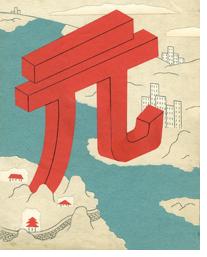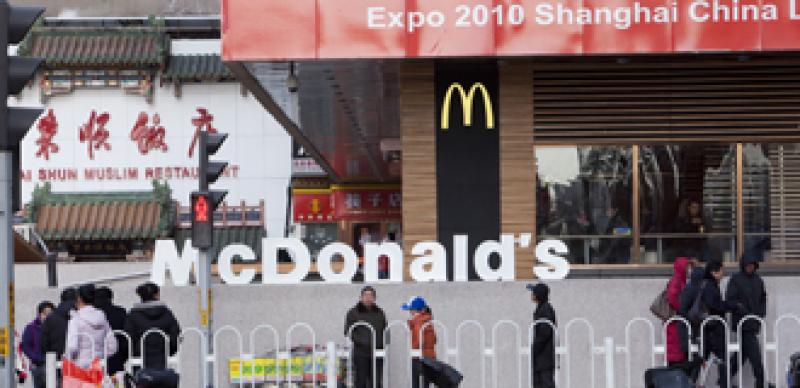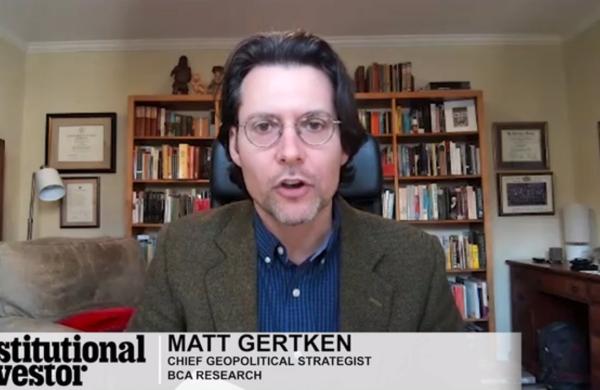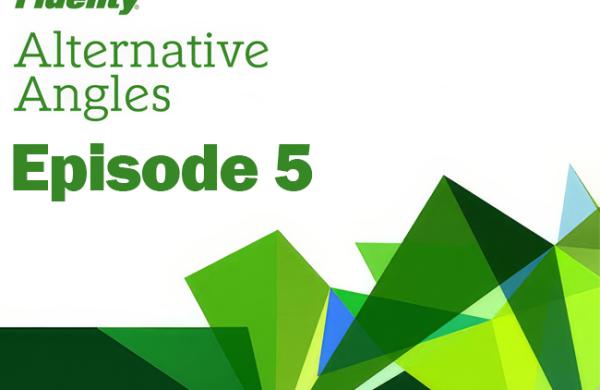
To be sure, the innovative currency loop is a far cry from true convertibility of the renminbi (translation: “the people’s currency”), much less immediate competition to the dollar or euro as a global tender. But the deal signifies broad ambitions by China on the world stage and the willingness of China’s monetary policymakers to be creative in making attractive investments happen.
In the case of the fast-food vendor, McDonald’s wanted to open 175 new outlets, but it did not have the necessary capital in renminbi, or yuan, the individual currency unit. So the Chinese State Administration of Foreign Exchange, which oversees commercial exchange involving the renminbi, allowed the Oak Brook, Illinois, company to raise money in Hong Kong by selling renminbi-denominated bonds to international investors.
In addition to offering new options with its currency, China hopes the action will accelerate the process of turning Hong Kong, the former British possession, into its primary offshore currency trade settlement center. “China is one step closer to allowing foreign companies to have a full range of domestic capital-raising options,” says Hu Yifan, Hong Kong–based chief economist of Beijing-based Citic Securities Co., China’s largest brokerage firm.
Since the McDonald’s deal on August 19, other foreign companies have issued yuan-denominated debt in Hong Kong (such instruments are known informally as dim sum bonds, in honor of the local cuisine). On October 21, Manila, Philippines–based Asian Development Bank raised 1.2 billion yuan ($180 million) in dim sum, a ten-year note with a coupon rate of 2.85 percent. The bond was heavily oversubscribed, snapped up mostly by Asian and European investors hungry to get their hands on China’s first offshore RMB investment products. On November 24, U.S.-based Caterpillar raised 1 billion yuan in a two-year dim sum note for its China ventures. In December the International Finance Corp., part of the World Bank group, sought to raise 100 million yuan with RMB-flavored dim sum. “We plan to use the proceeds,” says Nina Shapiro, IFC’s vice president and treasurer based in Washington, “to invest in Chinese private enterprises.” Many more RMB deals are in the offing.
The floodgate of opportunity was opened recently when Beijing took several steps to adapt currency policies to world interest in investing, specifically allowing Hong Kong–based banks to issue yuan through the sale of bonds, Hong Kong depositors to increase yuan savings by converting up to 20,000 yuan a day, and Hong Kong–registered companies to convert foreign currencies into yuan daily and even to take yuan in lieu of dollars as payment for goods or services sold outside the mainland.
With 217 billion yuan on deposit by the end of October, up from 63 billion yuan at the end of 2009, according to the Hong Kong Monetary Authority, Hong Kong has taken substantial steps toward becoming China’s offshore RMB trade settlement center. That said, Hong Kong’s pool of offshore yuan liquidity pales in comparison with China’s 60 trillion yuan on deposit. Nevertheless, the direction is clear: Offshore yuan liquidity will rise rapidly in the years ahead, with Hong Kong as the main offshore trading hub.
Since 2008, China has negotiated currency swap agreements with trading partners from Southeast Asia to Latin America, primarily emerging nations. “Demand for the renminbi as a trade settlement currency lies in emerging, not developed, economies,” says Qu Hongbin, Hong Kong–based chief China economist at HSBC Holdings. Emerging markets account for about 55 percent of China’s total trade, compared with 47 percent ten years ago. “We anticipate an increasingly rapid rise of this share,” he asserts.
In addition, China also has eased its domestic currency controls, allowing some multinationals to repatriate a portion of profits and foreign institutional investors to convert and repatriate portions of the equity instruments they hold.
China is on track to free or nearly unrestricted convertibility of the RMB as well as a more liberalized managed floating exchange rate by 2020, says Citic’s Hu. “I expect no capital control for the trade account by 2020,” she explains. “There should be no daily RMB exchange limit by that time. The Chinese government has made it clear it plans to make Shanghai an international finance center by 2020, and to do so it must make the RMB largely convertible by then.”
Only a few limits may remain after 2020, says Hu, who predicts that there still will be a minimum stay requirement for capital raised in China for outflow of dividends. Currently, the currency is allowed to rise or fall by 0.5 percent daily against the dollar. “The central bank will intervene if it thinks the market is too volatile,” she adds.
Those who closely watch China’s experiment say many of the mechanisms are in place for the eventual rise of the RMB as a global reserve currency, predicting that as soon as a decade from now the Chinese currency may begin to rival the greenback in global markets.
China’s strategy is still evolving, says Hu. “RMB internationalization is a direction, but there is no clear step, pace, phase planned, as far as I know,” explains the former World Bank consultant, who maintains close ties to senior officials at China’s central bank. “It probably follows China’s strategy of ‘crossing the river by touching the stones’ — that is, experiment and observe, then experiment again and observe, and so on until the river is crossed.”
Qu of HSBC, however, describes China as having touched three specific stones in its journey to cross the river: one, making the yuan a global trade settlement currency; two, allowing its broad use in international capital markets; and three, the biggest leap of all, allowing it to be converted as an international reserve currency.
That crossing may take longer than expected, warns Kwok On Fung, a Tokyo-based portfolio manager who oversees $500 million of investments in the greater China region at Nikko Asset Management Co. “The government knows there are many benefits when others take your currency, and the international prestige that goes with it,” he says. “But at the same time, they realize there is a huge cost,” namely, that the government and the people of China will lose control of the renminbi. “I think the Chinese government is most afraid of losing control,” he adds. “If they internationalize the currency and liberalize, sometime down the road they may face very volatile capital outflow. There is always a risk of that.”
Economic volatility has a direct impact on political stability, and the Chinese government loathes any sort of volatility, says Guan Anping, a Beijing-based securities lawyer and former official at the Ministry of Commerce. “A freely convertible RMB could lead to capital flight or incoming tidal waves of hot money,” he explains. “And the Chinese government is deathly afraid of this.” Still, officials in Beijing are determined to internationalize the RMB, says Guan, adding that they are working on building regulatory frameworks to manage the volatility that will come when the Chinese currency exchange mechanism is liberalized in the years ahead.
China’s regulators foremost need to gain experience in managing a freely convertible currency, notes Murtaza Syed, the International Monetary Fund’s deputy chief representative in Beijing. “China is ready in terms of economic size to have a global currency, but its institutions are not yet ready,” Syed said recently at a conference in Beijing. Even if partial convertibility were achieved in the coming years, that certainly would signal the end of an era in China, which kept the yuan pegged to the U.S. dollar and strictly controlled capital flow for decades. In the early decades of the revolution, a time when the nation operated as a centrally planned economy, conducting little trade with Western nations, China pegged the yuan at 2.47 to the dollar. As China reformed economically and opened up to foreign investors, the Chinese government allowed rapid depreciation, pegging the yuan at 8.28 to the dollar from 1994 to mid-2005, thereby accelerating the nation’s growth to become the world’s largest producer of labor-intensive manufactured goods. In that decade, China vaulted from the seventh-largest economy in the world to fourth-largest, according to the World Development Indicators database. In 2010, China eased past Japan to become the second-largest economy.
It was under U.S. pressure that China delinked the yuan from the dollar in 2005 and allowed for steady appreciation against a basket of currencies. When the global financial crisis intensified in mid-2008, China repegged the yuan at 6.83 to the dollar. It didn’t allow the currency to appreciate again until June 2010, ahead of the Group of 20 summit in Toronto, when, again under U.S. pressure, China’s central bank announced that it would allow for faster appreciation. The yuan currently is trading at about 6.66 to the dollar.
The yuan and its pace of appreciation has been the key sore spot in U.S.-China trade relations. The American Congress, finding in China a convenient scapegoat for U.S. economic woes, has been tinkering with imposing tariffs on Chinese imports. In November, U.S. President Barack Obama pressed Chinese President Hu Jintao to push the currency toward full convertibility, a point he has repeatedly made with Hu.
Even as the world is pushing China to revalue, many in the West seem to have a short memory, observes Shane Oliver, head of investment strategy and chief economist at Sydney-based AMP Capital Investors, one of Australia’s largest asset managers, with A$97 billion ($95 billion) under management.
“America didn’t let its currency float until 1971, when former U.S. President Nixon ended the gold standard for the U.S. dollar,” Oliver says. “Australia didn’t let its currency float until 1983 [the Australian dollar was effectively fixed to the British pound and later the U.S. dollar, until then]. Both nations floated their currencies when their per capita incomes were far higher than China’s. The level of development in Western countries was far more advanced than what it is in China today.”
China’s per capita gross domestic product in 2009 was $3,743 — the 87th highest in the world, according to the World Bank — while the U.S. had a per capita GDP of $46,436, the sixth highest. Back in 1971 the U.S. had a per capita GDP of $5,361, No. 1 among major nations in the world, while China had a per capita GDP of $117, among the poorest in the world, with a rank of 121.
“So you can understand why Chinese are reluctant to accept free markets,” Oliver adds. “A lot of these countries that are lecturing China on having a fixed exchange rate didn’t float their currencies until a few decades ago because they themselves didn’t trust the gyrations in the exchange markets. It comes down to politics.”
Politics can work both ways. Indeed, the executive board of the International Monetary Fund recently approved a plan to increase China’s voting stake to third, behind those of the U.S. and Japan, in recognition of China’s rising geopolitical importance.
“This historic agreement is the most fundamental governance overhaul in the fund’s 65-year history and the biggest-ever shift of influence in favor of emerging-markets and developing countries to recognize their growing role in the global economy,” said IMF managing director Dominique Strauss-Kahn at a news conference in early November. Under the IMF system, 6 percent of IMF voting shares would be transferred to “dynamic” emerging-markets countries from industrial economies. The move would vault China over France, the U.K. and Germany, into the third spot. It would also lift other large emerging powers, including India and Brazil, into the top ten of the 187-member institution.
The IMF’s member countries will vote on the reforms, with 85 percent support needed for the changes to pass. Some countries will also require legislative approval, including the United States. Still, the likelihood of the reforms’ passing is high.
“We see the rise of the ‘redback,’” says HSBC chief China economist Qu. “If there is to be a rival to the dollar as the world’s reserve currency in the 21st century, it surely must be the Chinese renminbi.” China recently surpassed Japan as the world’s second-largest economy, and it may pass the U.S. in the next 20 years. “We may be on the verge of a financial revolution of truly epic proportions,” he adds.
But until that epic time, compa nies that want to get quick clearance from China’s foreign exchange administration should avoid projects in real estate and steel — categories in which authorities are wary of hot money chasing speculation —and investment in restricted areas such as China’s defense contractors, says Derek Sulger, a founding partner at Shanghai-based Lunar Capital Management, a private equity firm that has $225 million in assets under management. “There’s no problem in getting approval to remit into China for businesses classified as ‘allowed’ or ‘encouraged,’” he adds, noting that his firm is managing investments in eight Chinese private companies. “The process takes 30 to 90 days and is generally straightforward.”
Another variant of RMB-denominated debt, known as panda bonds, permits foreign issuers to raise capital within the mainland. Leaders in Beijing so far have allowed only two foreign firms — the ADB and IFC — to issue pandas. Since 2005 the IFC has issued two bonds, raising a total of 2 billion yuan; the first has a ten-year maturity and a 3.4 percent annual coupon rate, and the second has a seven-year maturity and yields 3.2 percent. The ADB also raised 2 billion yuan through two bond issues, the first in 2005 with a ten-year maturity and 3.34 percent annual coupon rate and the second in 2009 with a ten-year maturity and 4.2 percent rate.
“We fully intend to broaden the panda bond experiment beyond just multilateral development agencies,” said China’s central banker, Zhou Xiaochuan, at an Institutional Investor conference in Beijing on November 16.
For now dim sum seems a quicker bet. Why? China wants Hong Kong to prosper as China’s offshore RMB trade settlement center, says Sundeep Bhandari, regional head of global markets in northeast Asia at Standard Chartered. “Chinese companies seeking public listings strengthened Hong Kong dramatically in the 1990s,” he notes. “RMB bond sales could have a similar effect in the years ahead as many foreign companies hoping to expand in China will seek to raise such bonds in Hong Kong.”
Already, companies are advancing the McDonald’s model. Emil Nguy, chairman of Hong Kong–based hedge fund Income Partners Asset Management (HK), says he is working with such banks as Deutsche Bank and Standard Chartered to raise up to $1 billion for a fund dedicated to investing only in RMB-denominated products. “We believe there’s definitely high demand for this fund,” says Nguy, who is targeting global institutional investors and high-net-worth individuals.
Shanghai, Hong Kong’s main competition for foreign investment, has its own RMB plans. Hu Ruyin, head of research at the Shanghai exchange, confirms that his bourse is planning to allow foreign companies to list foreign shares in the near future. “China is aiming to be an economic giant,” Hu says. “To be an economic giant, China must also be a financial giant. To be a financial giant, China must have open capital markets that are integrated with the world.”
Also on the drawing board: provisions to allow foreign branches of Chinese financial institutions to issue RMB-denominated offshore investment products. Bank of China International Holdings, China Construction Bank Corp. and Citic Securities International Co. may be permitted to offer everything from structured products to index-linked investment funds. “It will be another milestone in the process of RMB internationalization,” says Citic Securities’ Hu.
“Sniffing the potential for business, banks — especially multinational ones — have been eager to get involved in renminbi cross-border trade,” says HSBC’s Qu, who predicts that at least half of China’s trade flows with emerging-markets countries could be settled in renminbi within a few years, up from less than 3 percent now.
Further, predicts Qu, nearly one third of China’s total trade could be settled in renminbi by 2015.
“The renminbi trade settlement scheme is triggering a chain reaction in China’s capital markets,” Qu wrote in his landmark November report, “The Rise of the Redback.” As he explained: “Rising demand for the renminbi overseas is smoothing the path for Chinese corporations to invest abroad with the renminbi. As renminbi trade revenue accumulates outside China, so too will the path be smoothed for foreign companies wishing to invest in China with the renminbi.”
No doubt there are obstacles, not least the possible disintegration of China’s powerful economic engine.
“There’s talk about China’s economy collapsing in heaps of bad debt, due to speculative high real estate prices,” says AMP economist Oliver, who visits China’s major cities regularly. “I see no signs of an impending collapse. I see signs of rising house prices, but I don’t see toxic debt like those that exist in the U.S. Most Chinese paid huge down payments for their properties. There is no oversupply, not with a population like China’s. I think the China story will keep rolling on.”
Oliver recounts his visits to a recently opened shopping center in Beijing. Two years ago the shops were empty, while today “every shop has two to three people in it.”
Not surprisingly, there’s no dollar menu at the outlets with the Golden Arches. At this home of the Big Mac, the yuan is king.






